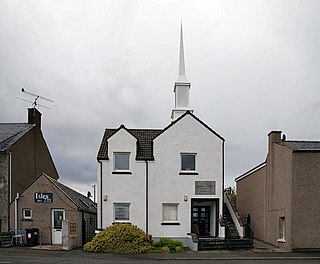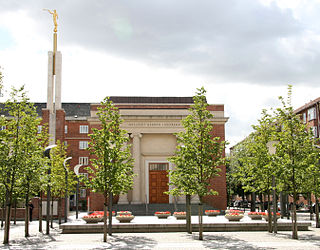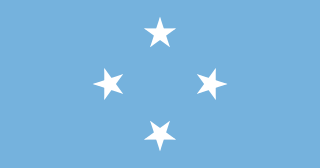
The Latter Day Saint movement is the collection of independent church groups that trace their origins to a Christian Restorationist movement founded by Joseph Smith in the late 1820s.

The Church of Jesus Christ of Latter-day Saints was unofficially established in South Korea as early as World War II due to religious influence by LDS servicemen; however, Korean people did not begin to get baptized until the missionary efforts of LDS servicemen during the Korean War. Kim Ho Jik was the first Korean person to be baptized in the LDS Church on July 29, 1951 in New York. Two of his children were of the first four Korean people baptized in Korea on August 3, 1952. LDS Church presence and missionary work was officially established on April 20, 1956 with the arrival of two missionaries: Don G. Powell and Richard L. Detton. The Korean Mission opened on July 8, 1962 with Gail E. Carr as the first president of the mission. Successful missionary work led to the growth of the LDS Church in the 1960s and 1970s leading to the organization of the first stake in Korea in 1973 and the dedication of the first temple in Seoul on December 14, 1985.
Joseph William Billy Johnson was one of the first converts to the Church of Jesus Christ of Latter-day Saints in Ghana, and was one of the first stake patriarchs in the country. Prior to his baptism, he had worked for many years to spread the doctrines of the LDS Church to many of his fellow countrymen. He was baptized six months after the 1978 Revelation on Priesthood and among the first to be baptized in the church in Ghana.
Gudmund Gudmundson was one of the first Icelanders to join the Church of Jesus Christ of Latter-day Saints and was among the first Mormon missionaries to preach in Iceland.

The Church of Jesus Christ of Latter-day Saints was introduced to Ghana, West Africa, in 1962. It was officially organized in 1978, following announcement of the revelation on priesthood. As of 2022, the LDS Church reported 101,924 members in 353 congregations in Ghana, making it the second largest body of LDS Church members in Africa, behind Nigeria. In 2021, Ghana ranked as having the third most LDS Church members per capita in Africa, behind Cape Verde and Sierra Leone.

The Church of Jesus Christ of Latter-day Saints in Norway is a restorationist free church. There are more than 4,500 members in Norway. A temple to be built in Oslo was announced on April 4, 2021 by church president Russell M. Nelson.

The Church of Jesus Christ of Latter-day Saints was established in Japan in 1901 when the church's first missionaries arrived on August 12. Among them was Heber J. Grant, who was then a member of the Quorum of the Twelve and later became the church's 7th president. Horace S. Ensign, Louis A. Kelsch, and Alma O. Taylor accompanied Grant. The LDS Church's first baptism in Japan was on March 8, 1902, when Grant baptized Hajime Nakazawa, a former Kannushi. The Book of Mormon was translated three times. The first translation, which took over six years, was completed by Taylor in 1909. It was then recommended that the Book of Mormon be translated into bunshō, a more elegant literary style, which was done by Chōkō Ikuta in 1909, shortly before it was published and distributed. The third translation in 1957 was done by Tatsui Sato. In 1995, the Book of Mormon was translated again into a more colloquial style.

The Church of Jesus Christ of Latter-day Saints in England refers to the Church of Jesus Christ of Latter-day Saints and its members in England. England has five missions, and both temples in the United Kingdom. With 145,385 members in 2011, England had more LDS Church members than any other country in Europe.

The Church of Jesus Christ of Latter-day Saints was established in Brazil in 1926 with the opening of the South American Mission. Missionary work was focused on small German immigrant colonies in South Brazil. The LDS Church was forced to expand missionary work to Brazilians and Portuguese speakers when non-Portuguese languages were banned in public meetings in 1938. The Brazil Mission was opened on February 9, 1935, with Rulon S. Howells as mission president. The first Portuguese translation of the Book of Mormon was published in 1939.

The Church of Jesus Christ of Latter-day Saints had a presence in Russia before the rise of the USSR, with the first baptisms occurring in 1895. Preliminary missionary efforts began before the dissolution of the Soviet Union, and the Russian government officially recognized the church in 1991. Membership increased in the 1990s and early 2000s. Missionary efforts were impacted by the 2016 Yarovaya law, which prohibited proselytizing outside of official church property. Current membership statistics are not available for Russia, but the church reported 19,946 members in 2009. As of February 2023, there were three stakes and three missions in Russia. In 2018, Russell M. Nelson announced that a temple would be constructed in a major city in Russia.

The Church of Jesus Christ of Latter-day Saints has had a presence in Italy since 1850.

The Church of Jesus Christ of Latter-day Saints has had a presence in the island of Ireland since at least 1840, when the Elder John Taylor first preached in Newry. He and other missionaries converted a number of Irish people, forming a branch in Hillsborough, County Down. Many of the converted Irish saints emigrated in order to escape poverty, as well as to live in majority Latter Day Saint communities. Missionary efforts continued in the 1850s, and a small branch was established in Dublin, but many members emigrated to Utah or lost interest in the church. In 1867, the Irish mission was placed in the care of the British mission. A new branch was formed in Belfast in 1884 and a Dublin branch was reestablished in 1900. All of this occurred despite anti-Mormon disturbances by local Irish people.

The Church of Jesus Christ of Latter-day Saints in Scotland is the Scottish branch of the Church of Jesus Christ of Latter-day Saints.

The Church of Jesus Christ of Latter-day Saints in Wales refers to the Church of Jesus Christ of Latter-day Saints and its members in Wales.

The Church of Jesus Christ of Latter-day Saints was first brought to the Netherlands in 1841, with the first congregation officially established in 1862 in Amsterdam. A mission to the Netherlands was organized in 1864, and the Dutch translation of the Book of Mormon was published in 1890. Membership grew in the 20th century despite challenges posed by World War I, the Great Depression, and the German invasion of the Netherlands during World War II; approximately 14,000 people were baptized into the Church during its first 100 years in the Netherlands. The Dutch government officially recognized the Church in 1955. The Netherlands Stake of the Church of Jesus Christ of Latter-day Saints was established in 1961, becoming the first stake established on the European continent. The Hague Netherlands Temple was completed in 2002.

The Church of Jesus Christ of Latter-day Saints in the Isle of Man refers to the Church of Jesus Christ of Latter-day Saints and its members in the Isle of Man. As of 31 December 2022, The Church of Jesus Christ of Latter-day Saints reported 281 members in one congregation, the Douglas Ward, in the Isle of Man. In 2019, the Isle of Man had the 2nd most LDS Church members per capita in Europe, behind Portugal. Despite their small numbers, Manx Mormons have a heritage going back over a hundred and fifty years, which is obscured by their tendency to emigrate to the US and by the LDS Church administering the Isle of Man as part of England, when it is not actually part of the United Kingdom.

The following outline is provided as an overview of and a topical guide to the Church of Jesus Christ of Latter-day Saints.

The Church of Jesus Christ of Latter-day Saints in Denmark refers to the Church of Jesus Christ of Latter-day Saints and its members in Denmark.

The Church of Jesus Christ of Latter-day Saints in the Federated States of Micronesia refers to the Church of Jesus Christ of Latter-day Saints and its members in the Federated States of Micronesia (FSM). The church's first known missionaries arrived on July 5, 1978. As of December 31, 2022, there were 5,966 members in 23 congregations in FSM. The LDS Church has congregations in every state in the FSM.




















